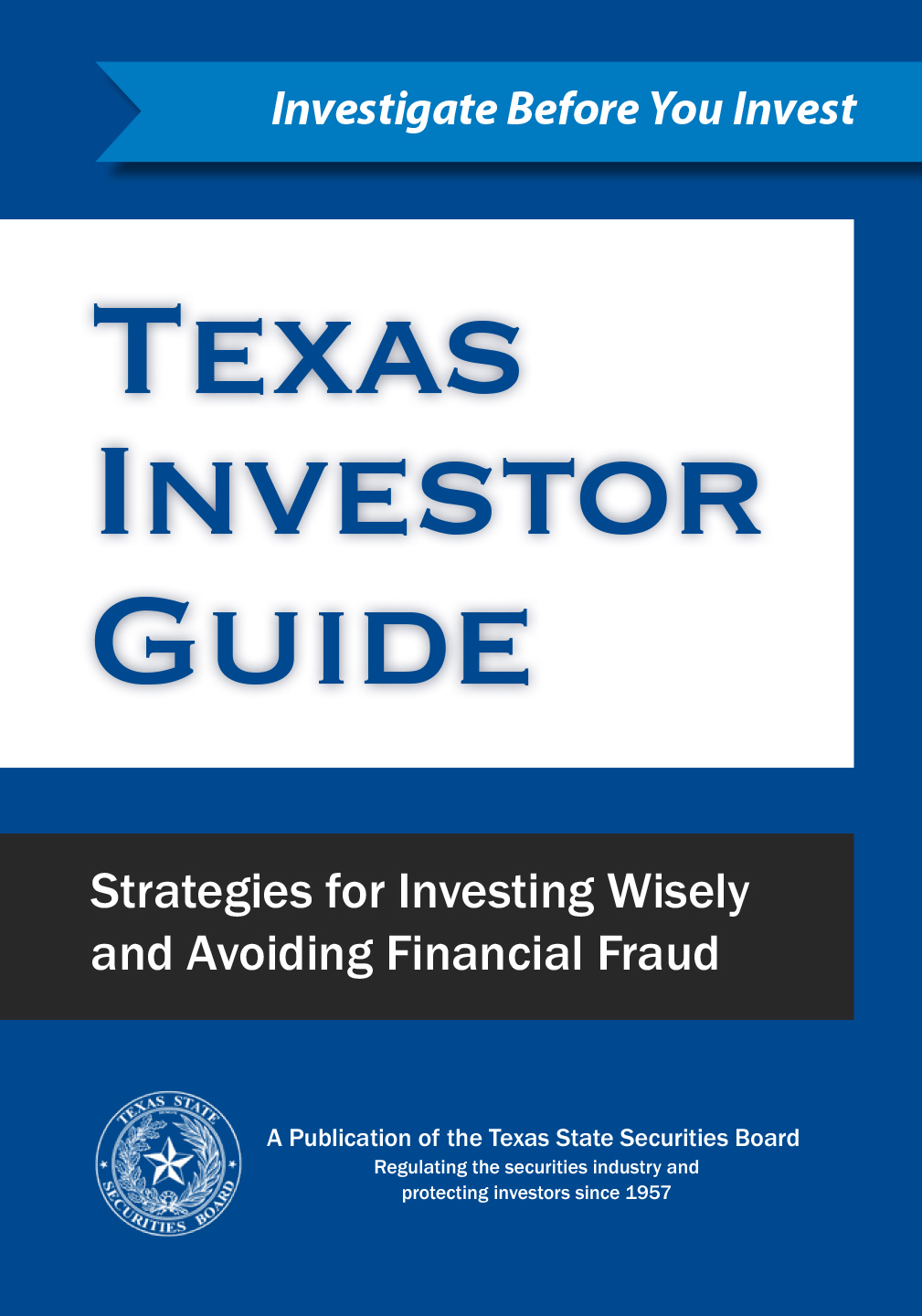Investors have more responsibility than ever to meet their financial goals.
Corporate pensions are dwindling like polar ice caps. Public pensions operate amid budgetary constraints. Social Security may replace a smaller percentage of the income a retiree earned while working. As a result, workers are increasingly fending for themselves by setting up their own retirement accounts or participating in the retirement accounts offered by employers. This shift in responsibility requires all investors to know a lot more about making investment decisions.
 The Texas Investor Guide: Strategies for Investing Wisely and Avoiding Financial Fraud helps investors – beginning and more experienced –to understand the basics of investing.
The Texas Investor Guide: Strategies for Investing Wisely and Avoiding Financial Fraud helps investors – beginning and more experienced –to understand the basics of investing.
But there's more. The articles listed below amplify or expand on topics covered in the Investor Guide. We hope they continue to spur your interest in investing and help you to avoid inappropriate investments and outright fraud.
First, Save. It makes little sense to start investing before you take the steps needed to make sure you and your family's financial house is in order.
Why Invest? To name just a few reasons: so you can buy a home, send your kid to college, and enjoy a secure retirement. Why don't some people invest? The article explores that question, too.
Mutual Funds. Most people will – and probably should – invest through mutual funds. Learn how funds are formed, how they operate, and how their fees largely determine your returns.
Target Date Funds. A mutual fund that adjusts the percentage of stocks and bonds it holds to meet a future need – retirement that is decades away, or money for a child who may attend college in, say, 2030.
Cash Investments. Cash and cash equivalents fall into the low-risk category, but that doesn't mean no-risk.
Stocks. As a group, stocks have provided stronger returns over time than bonds or cash. Stronger returns improve the likelihood of your reaching your investment goals. The hard part is accepting the volatility of stocks and staying invested during downturns.
Bonds. If you think of bonds as stodgy investments suitable only for the proverbial widows and orphans, or are unsure how to mix them into your portfolio, here's the lowdown on fixed income.
Individual Retirement Accounts. There are many types – traditional IRA, Roth, 401(k), 403(b), and so on – but it's not the name that counts. It's whether you take advantage of their benefits.
Rebalancing Your Portfolio. Once you decide what percentage of your assets you want to allocate to different types of stocks and bonds, the markets will push your allocation off its axis. Rebalancing restores your equilibrium.
Don't Chase Yield. If you're dissatisfied with the paltry interest paid on money market accounts, CDs, and other relatively safe investments, you may reach for investments that promise to pay more while being "safe and secure." Bad idea.
Risk & Return. Greater risk means a greater chance of investment loss. A small amount of risk means lower returns. It is unwise to believe otherwise.
The Power of Compounding. Einstein didn't really call compounding the eighth wonder of the world. But compounding is a powerful force in building up your assets.
